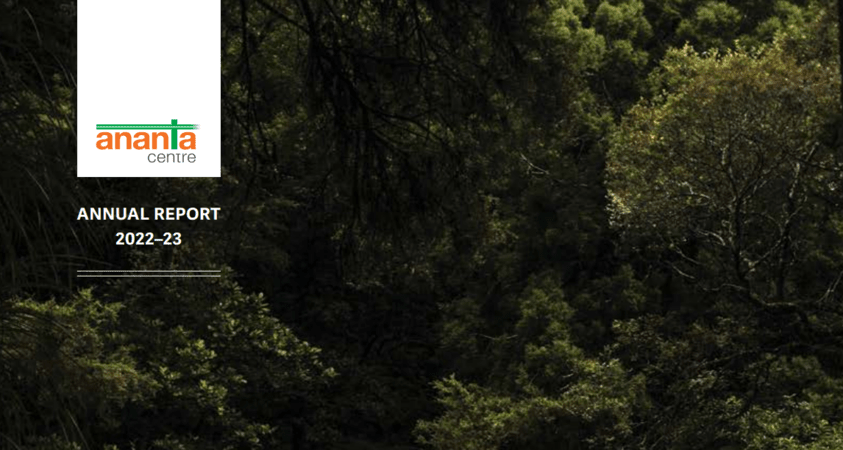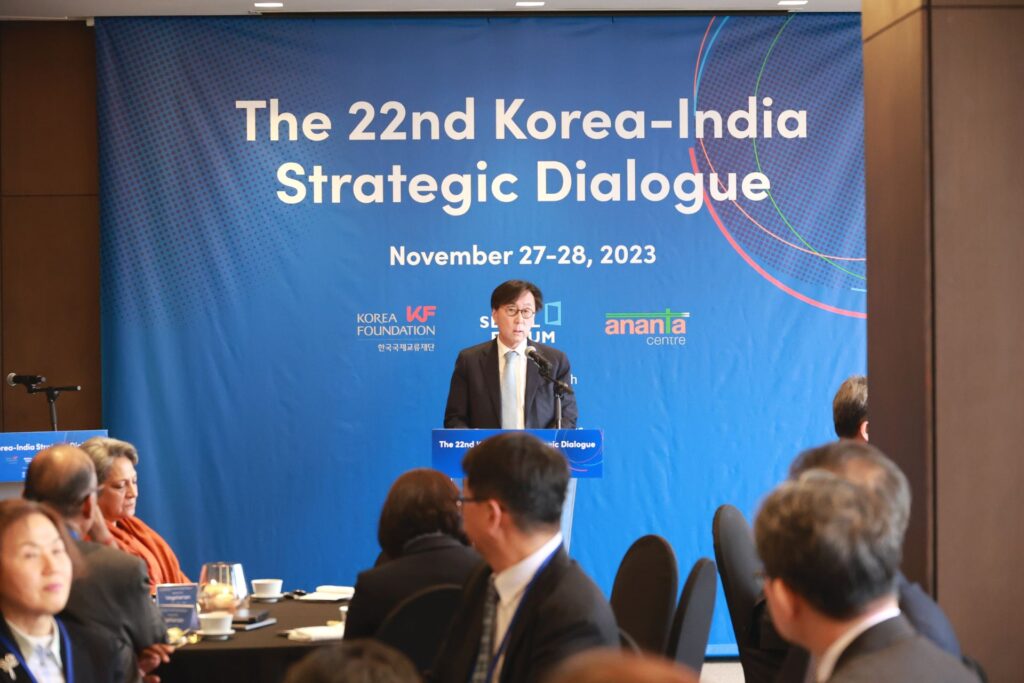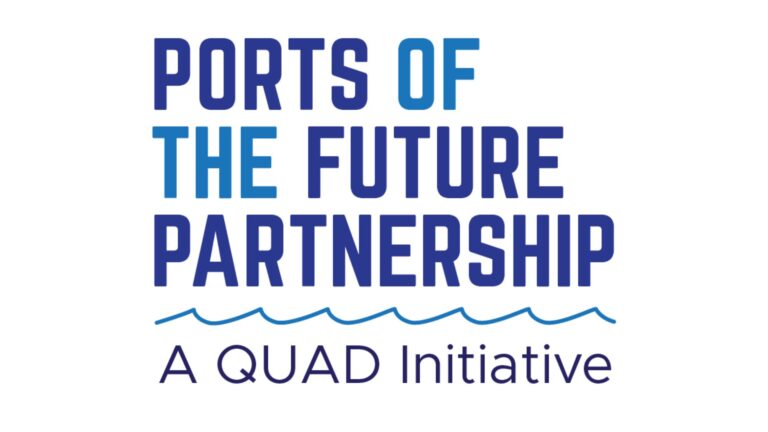Maritime Partnerships in the Indo-Pacific: Regional Convergence and Strategic Divergence
India’s evolving maritime diplomacy in the context of the October 2025 maritime week in Mumbai reflects the nation’s strategic imperative to balance economic opportunities with security concerns across the Indo-Pacific. The examination of bilateral partnerships with Singapore, Philippines, South Korea, Indonesia, Malaysia, Thailand, and Vietnam reveals a complex matrix of convergence and divergence that will shape regional maritime governance in the coming decade.
Singapore: Strategic Alignment and Maritime Excellence
Convergence Points
Singapore represents India’s most mature maritime partnership in Southeast Asia, built on decades of institutional cooperation. The Singapore-India Maritime Bilateral Exercise (SIMBEX), now in its 32nd edition, demonstrates unprecedented operational convergence between the two navies. The relationship extends beyond traditional security cooperation to encompass the Comprehensive Strategic Partnership (CSP) elevated during Prime Minister Modi’s September 2024 visit.
The convergence is particularly strong in maritime domain awareness (MDA), where Singapore’s strategic location and India’s expanding naval capabilities create synergistic benefits through the new MDA 3.0 framework. Both nations share commitment to rules-based maritime order and freedom of navigation principles. Economic integration through Singapore’s USD 160 billion investment position as India’s largest Association of Southeast Asian Nations (ASEAN) trading partner and top Foreign Direct Investment (FDI) source creates natural alignment in securing maritime trade routes.
Strategic Divergence
Despite strong bilateral ties, divergences emerge in approach to regional great power competition. Singapore’s exposure is predominantly in technology and finance channels, particularly in semiconductor supply chains, creating constraints on deeper strategic alignment with India’s Indo-Pacific vision. The city-state’s preference for maintaining strategic balance rather than choosing sides limits the scope of security cooperation beyond bilateral frameworks.
Singapore’s advanced financial and technological capabilities sometimes create dependency concerns for India’s indigenous development priorities. The semiconductor cooperation agreements signed in September 2024, while beneficial, highlight India’s technological gap and potential strategic vulnerabilities requiring joint risk-mapping approaches.
Action Points for India
Co-develop an “MDA 3.0” pilot with Singapore that fuses Indo-Pacific Partnership for Maritime Domain Awareness (IPMDA) data for anomaly detection in the Malacca–Andaman corridor. Launch a port-cyber and supply-chain data-trust framework for India’s east coast ports with Singapore’s ecosystem to de-risk coercion and improve logistics resilience.
Philippines: Emerging Strategic Partnership Amid South China Sea Tensions
Convergence Points
The Philippines represents India’s most dynamic new maritime partnership, formalized through the strategic partnership announced during President Marcos’s August 2025 visit. The first-ever joint naval exercises in the South China Sea (SCS) in August 2025 mark a watershed moment in India-Philippines maritime cooperation. Both nations share commitment to United Nations Convention on the Law of the Sea (UNCLOS) principles and concerns about China’s assertive territorial claims.
The BrahMos missile system procurement demonstrates convergence in defense modernization priorities with the USD 375 million contract progressing through staged deliveries: second batch delivered April 2025, third batch being due soon. The Philippines’ willingness to acquire Indian military technology despite Chinese pressure indicates strong strategic alignment. The Shore-Based Anti-Ship Missile Battalion of the Philippine Marine Corps has completed operator training under Indian Navy supervision.
Areas of Divergence
The Philippines’ geographical proximity to China creates inherent vulnerabilities that limit the depth of strategic cooperation with India. Manila’s need to balance relations with Beijing while strengthening ties with New Delhi creates strategic ambiguity. The Philippines’ focus on immediate SCS threats sometimes diverges from India’s broader Indo-Pacific strategic vision.
Economic cooperation remains limited compared to security ties, with bilateral trade still modest. Infrastructure development cooperation faces challenges from funding constraints and project implementation delays. The Philippines’ preference for multilateral approaches through ASEAN sometimes conflicts with India’s bilateral strategic frameworks.
Action Points for India
Make sustainment, operator training, and sensor-shooter integration the priority to ensure credible coastal defence capability. The Philippines is considering nine additional BrahMos batteries for the Army under the Horizon 3 military modernization program alongside interest in Akash surface-to-air missiles worth over USD 200 million. Use exercises to layer in MDA sharing and dark-shipping interdiction, leveraging IPMDA feeds.
South Korea: Technology Partnership with Strategic Limitations
Convergence Points
South Korea’s New Southern Policy creates natural convergence with India’s Act East Policy, particularly in maritime infrastructure development. The Korea Green Growth Trust Fund’s support for India’s coastal management and blue economy initiatives demonstrates alignment in climate adaptation priorities. Bilateral cooperation in shipbuilding through partnerships indicates technological convergence in green maritime corridors and port electrification.
Both nations share concerns about China’s maritime assertiveness and support rules-based order in the Indo-Pacific. South Korea’s observer status in the Indian Ocean Naval Symposium (IONS) and potential participation in India’s Indo-Pacific Oceans Initiative (IPOI) create platforms for deeper cooperation.
Strategic Divergence
South Korea’s reluctance to extend naval presence into the Indian Ocean limits operational maritime cooperation with India. Seoul’s focus on Northeast Asian security concerns, particularly North Korea, sometimes conflicts with India’s priorities for broader Indo-Pacific engagement. The infrequent Indian naval visits to South Korean ports reflect limited operational integration.
Economic dependencies on China create constraints on South Korea’s ability to align fully with India’s strategic vision. Trade patterns and supply chain integration with China limit Seoul’s strategic autonomy in Indo-Pacific cooperation frameworks. Technology transfer limitations due to US alliance commitments sometimes hinder deeper defense industrial cooperation with India.
Action Points for India
Launch an India-Republic of Korea (ROK) maritime green corridor programme across select ports; set up a joint lab on corrosion, coatings, and electric harbour craft. Expand shipbuilding and maritime systems collaboration where Korean industry leads in auxiliaries, green retrofits, and port electrification.
Indonesia: Strategic Partnership with Sovereignty Sensitivities
Convergence Points
Indonesia’s shared vision of maritime cooperation in the Indo-Pacific, articulated in the 2018 joint statement, creates strong foundational alignment with India. The Sabang port development project, with the port located 104 nautical miles from India’s Indira Point, represents convergence in connectivity and blue economy priorities. Both nations share commitment to ASEAN centrality and non-aligned approaches to great power competition.
Maritime security cooperation through coordinated patrols and capacity building demonstrates operational convergence. The 43rd India-Indonesia Coordinated Patrol in December 2024 saw Indian Navy warships INS Kesari and INS LCU L57 docking at Sabang Port. Indonesia’s Global Maritime Fulcrum vision aligns with India’s Security and Growth for All in the Region (SAGAR) doctrine in emphasizing sustainable ocean resource utilization.
Areas of Divergence
Indonesia’s traditional non-alignment policy and preference for ASEAN consensus sometimes limit deeper security cooperation with India. Jakarta’s sensitivities about great power competition in Southeast Asia create constraints on strategic alignment. The slow pace of Sabang port development reflects bureaucratic and political challenges in implementing connectivity projects despite completing joint feasibility studies in 2023.
Religious and cultural differences sometimes create diplomatic complications, particularly regarding minority rights issues. Indonesia’s preference for multilateral frameworks over bilateral strategic arrangements limits the scope of exclusive cooperation with India. Economic cooperation faces challenges from regulatory differences and infrastructure gaps with the Adani Group’s interest in the project facing uncertainty.
Action Points for India
Move Sabang from feasibility to phased delivery with transparent financing: channel works, fuel/Humanitarian Assistance and Disaster Relief (HADR) pre-positioning, an MDA node linked to IPMDA. Frame projects around safety, HADR, and blue economy to match Jakarta’s sovereignty sensitivities. Scale India-Indonesia co-patrols targeting Illegal, Unreported and Unregulated (IUU) interdiction along Andaman-Aceh.
Malaysia: Malacca Strait Cooperation with China Balancing
Convergence Points
Malaysia’s strategic position along the Malacca Strait creates natural convergence with India’s maritime security priorities. Both nations share interests in maintaining freedom of navigation through this critical chokepoint that handles 40% of India’s trade. The Malacca Strait Patrol framework provides institutional mechanisms for security cooperation through Vessel Traffic Services (VTS) upgrades and joint Search and Rescue (SAR) exercises.
Maritime domain awareness cooperation through information sharing and joint patrols demonstrates operational convergence. Both nations face similar challenges from non-traditional maritime threats including piracy, smuggling, and terrorism. Economic integration through Malaysia’s position as an ASEAN hub creates natural alignment in securing trade routes.
Strategic Divergence
Malaysia’s economic dependence on China and preference for maintaining strategic balance limits deeper security cooperation with India. Kuala Lumpur’s reluctance to take sides in great power competition creates constraints on strategic alignment. Historical territorial disputes with neighboring countries sometimes complicate multilateral cooperation frameworks.
Malaysia’s focus on immediate regional security concerns in the Malacca Strait sometimes diverges from India’s broader Indo-Pacific strategic vision. Religious and political considerations occasionally create diplomatic tensions that limit the scope of cooperation. Different approaches to maritime boundary delimitation create technical challenges in joint operations.
Action Points for India
Fund a VTS upgrade module and joint SAR exercises; integrate IPMDA alerts for dark shipping and IUU fishing. Prioritise Malacca Strait Patrol and MDA information-sharing for non-traditional threats while maintaining focus on safety and sustainability consistent with Malaysia’s strategic balancing.
Thailand: Gateway Potential with Strategic Limitations
Convergence Points
Thailand’s position as a bridge between the Indian and Pacific Oceans creates strategic alignment with India’s connectivity priorities. The proposed Land Bridge project connecting the Gulf of Thailand with the Andaman Sea offers potential for enhanced maritime cooperation. Both nations share interests in securing sea lanes through the Andaman Sea.
Blue economy cooperation in marine tourism, fisheries, and renewable energy demonstrates sectoral convergence. Thailand’s participation in the Indo-Pacific Economic Framework (IPEF) alongside India creates multilateral cooperation opportunities. Cultural and historical ties provide foundation for people-to-people connections.
Areas of Divergence
Thailand’s careful balancing act between major powers limits strategic alignment with India’s Indo-Pacific vision. Bangkok’s preference for maintaining neutrality in regional strategic competition creates constraints on deeper security cooperation. Political instability and frequent government changes affect continuity in bilateral cooperation frameworks.
Economic cooperation faces challenges from regulatory differences and infrastructure development delays. Thailand’s focus on immediate regional connectivity priorities sometimes diverges from India’s broader strategic objectives. Limited naval cooperation reflects geographical and strategic constraints. Chinese overproduction and restrictions on India-China bilateral trade has led to the transshipment of Chinese goods through Thailand to India, with projected 69.8-88.3 billion baht of Chinese exports routing via Thailand over three years. This creates compliance challenges for Thailand due to 40% penalty tariffs imposed by the U.S. on transshipped goods, potentially affecting USD 47.95 billion in China-Thailand trade.
Action Points for India
Set up an India-Thailand transshipment task force for data sharing, Harmonized System (HS)-code risk lists, joint audits, and rules-of-origin Standard Operating Procedures (SOPs) to prevent Chinese goods from claiming ASEAN preferences into India. Pilot Andaman-Ranong coastal shipping and HADR cooperation tied to IPMDA alerts.
Vietnam: Strategic Partnership in South China Sea Context
Convergence Points
Vietnam represents India’s strongest strategic convergence in Southeast Asia, particularly regarding SCS policies. Both nations share concerns about China’s territorial assertions and support for rules-based maritime order. Energy cooperation in hydrocarbon exploration demonstrates economic and strategic alignment.
Defense cooperation through the prospective USD 700 million BrahMos package (coastal batteries and potential air-launched integration) reflects deep strategic trust. Vietnam’s willingness to invite India for SCS energy projects despite Chinese pressure indicates strong strategic alignment. Maritime security cooperation through joint exercises and information sharing creates operational synergies.
Strategic Limitations
Vietnam’s complex relationship with China as both partner and rival creates strategic constraints on cooperation with India. Hanoi’s need to balance great power relations while maintaining party legitimacy limits public strategic alignment. Economic interdependence with China creates vulnerabilities that affect strategic decision-making.
Infrastructure cooperation faces challenges from funding limitations and technical capacity constraints. Vietnam’s focus on immediate territorial disputes sometimes conflicts with India’s broader regional strategic vision. Different approaches to A SEAN engagement create coordination challenges.
Action Points for India
Pair missiles with coastal radar/targeting and an India-Vietnam MDA fusion cell to translate capability to effect. Offer phased delivery with technology options including technology transfer arrangements to boost indigenous missile development capabilities, building political resilience and lower lifecycle costs.
Regional Climate and Economic Security Convergence
Blue Economy Alignment
All seven partners share convergence with India in blue economy development priorities, particularly in sustainable marine resource utilization and climate adaptation. Rising sea levels threaten India’s coastal naval bases in Mumbai, Chennai, Visakhapatnam, and the Andaman and Nicobar Islands. The shared vulnerability to climate change impacts creates natural cooperation opportunities in disaster management and coastal protection. Marine renewable energy development offers technological cooperation possibilities across the region.
Supply Chain Diversification
The “China Plus One” strategy creates convergence opportunities as regional partners seek alternative manufacturing and trade partnerships. India’s expanding manufacturing capabilities align with regional efforts to enhance supply chain resilience. Maritime connectivity improvements support integrated regional value chains, though between 2018-2024, 45% of China’s global FDI in manufacturing targeted ASEAN economies, complicating efforts to distinguish locally produced goods from those with substantial Chinese content.
Cross-Cutting Security Challenges
Chinese IUU Fishing and Maritime Militia Operations
China’s distant-water fishing fleet of over 2,500 vessels operates globally, with many serving dual purposes as intelligence-gathering platforms. These vessels, equipped with subsea lasers, cameras, and military-grade equipment, conduct grey-zone operations under People’s Liberation Army Navy (PLAN) command while maintaining civilian cover. In Southeast Asian waters, Chinese vessels routinely harass local fishers within their own Exclusive Economic Zones (EEZs). The USD 400 million in duty evasion cases in 2025 alone, with two-thirds involving Chinese shell companies routing goods through ASEAN nations, demonstrates the scope of this challenge.
Maritime Domain Awareness Revolution
The proliferation of commercial satellite sensing and analytical tools is democratizing maritime intelligence. The IPMDA launched by the Quadrilateral Security Dialogue (Quad) provides near real-time satellite-based tracking to address climate-related maritime challenges alongside security threats. However, the volume of data places strain on analytical capabilities of Indian Ocean countries with already limited resources.
ASEAN Centrality Under Pressure
With China as ASEAN’s largest trading partner for 15 consecutive years, member states face economic pressures that limit strategic autonomy. China’s bilateral approach to territorial disputes while publicly supporting ASEAN centrality creates manipulation of divisions among member states, undermining the solidarity necessary to effectively counter China’s actions.
Strategic Divergence Patterns
Despite significant convergences, persistent divergences reflect structural constraints on deeper integration. China’s economic influence across Southeast Asia limits strategic alignment with India’s Indo-Pacific vision through complex economic dependencies rather than simple trade dependence. ASEAN’s preference for consensus-based approaches sometimes conflicts with India’s bilateral strategic frameworks, with practical progress coming via bilateral/minilateral, function-specific deals.
Different threat perceptions and strategic priorities create coordination challenges. The success of India’s maritime partnerships will depend on its ability to navigate these convergences and divergences while building inclusive cooperation frameworks that respect partners’ strategic autonomy. The October 2025 maritime week provides an opportunity to address these challenges and strengthen regional maritime governance architecture for long-term stability and prosperity through dialogue.























